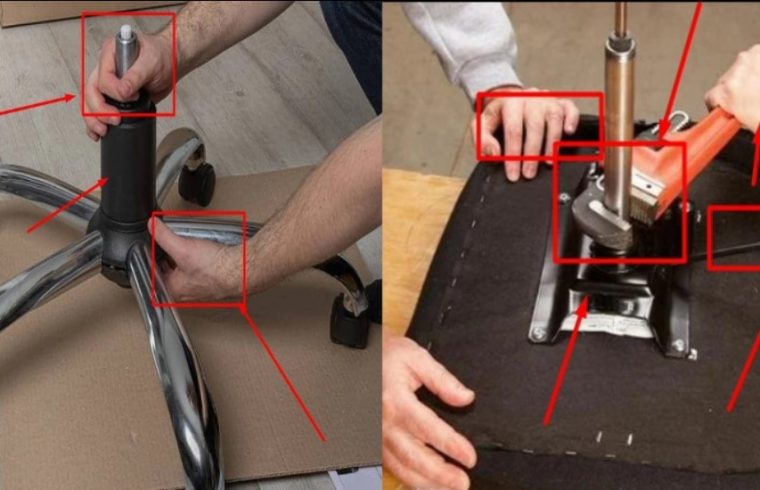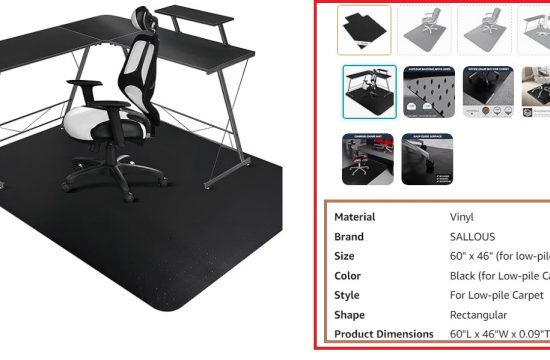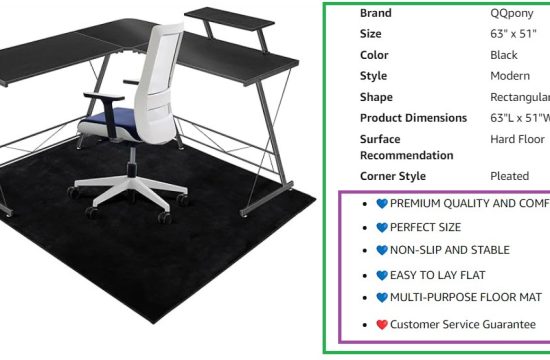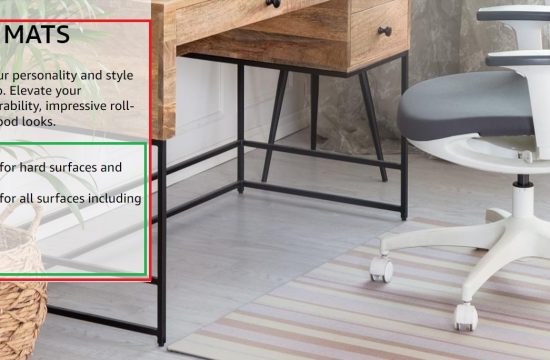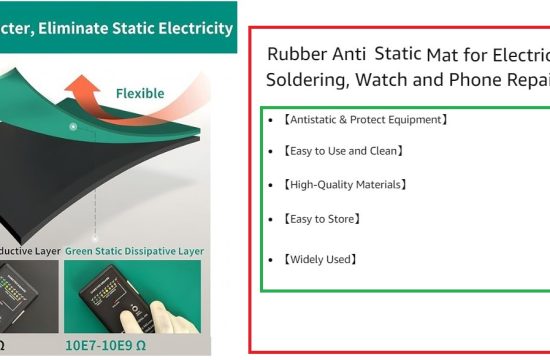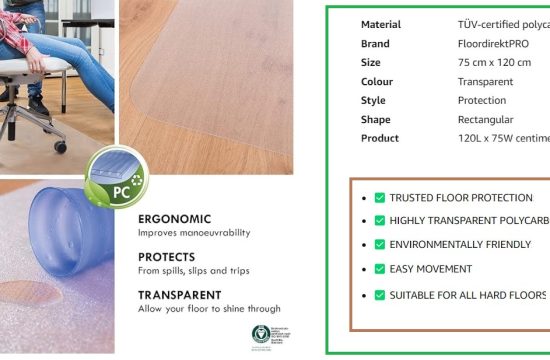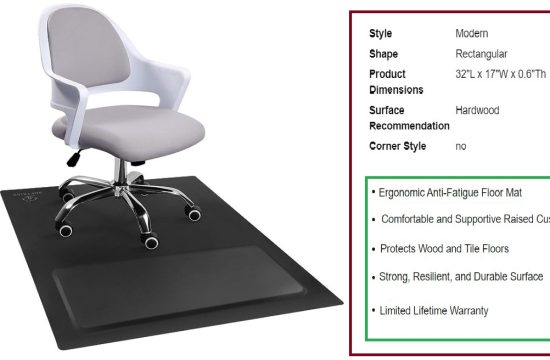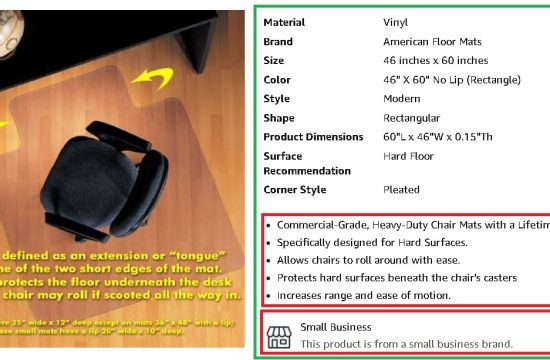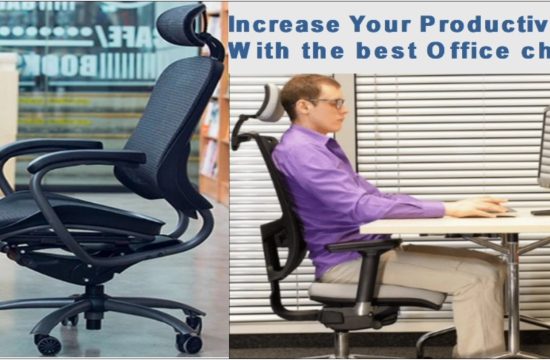As professionals, we often spend a significant amount of time seated in our office chairs.
While productivity and focus are essential factors in an efficient work environment, one often overlooked aspect is the comfort provided by a good office chair.
It is not uncommon for the hydraulics of our chairs to deteriorate over time, leading to discomfort and potential productivity issues.
In this blog post, we will delve into the importance of maintaining the hydraulics in your office chair and provide you with practical tips on how to fix them effectively.
Say goodbye to those annoying sinking or stuck chairs, and embrace the key to a comfortable and productive workspace.
Understanding the issue: Identifying common problems with the hydraulics in office chairs.
When it comes to office chairs, one of the common issues that individuals face is problems with the hydraulics.
The hydraulics in an office chair are responsible for adjusting the height and tilt of the chair, ensuring optimal comfort and functionality for the user.
However, these components can sometimes malfunction or deteriorate over time, leading to a chair that no longer performs as desired.
Understanding the common problems associated with the hydraulics is crucial in order to effectively fix and restore the functionality of an office chair.
One of the most prevalent issues with office chair hydraulics is leaking. If you notice hydraulic fluid leaking from the chair, it is a clear indication that the seals or valves in the hydraulics are damaged or worn out.
This can occur due to regular wear and tear or improper usage.
To fix this issue, the first step is to identify the exact source of the leak. Once identified, replacing the damaged seals or valves is necessary.
It is important to note that attempting to fix the leak by tightening the fittings or applying sealants may provide only a temporary solution and should be avoided, as it may further damage the hydraulics in the long run.
Be careful about height too
Another common problem with office chair hydraulics is the inability to maintain or adjust the desired height.
This issue can often be attributed to a faulty gas cylinder. Over time, the gas cylinder can lose its ability to hold pressure, resulting in the chair sinking or failing to stay at the desired height.
In such cases, replacing the gas cylinder is generally recommended.
It is crucial to ensure that the replacement cylinder is compatible with the chair model and fits securely. This should restore the ability to adjust and maintain the chair’s height effectively.
Additionally, a wobbly or unstable office chair can also be a cause for concern.
This issue can often arise due to loose fittings or worn-out components in the hydraulics. To fix this, it is important to inspect and tighten all the fittings and connections associated with the hydraulics.
If the issue persists, it may be necessary to replace any damaged or worn-out components such as the base or the hydraulic stem.
By addressing these issues promptly, you can restore stability and functionality to your office chair.
Tools Required:
To fix the hydraulics on an office chair, you’ll need a few essential tools. Before you start the repair process, make sure you have the following items on hand:
- Adjustable wrench: This tool is necessary for loosening and tightening various nuts and bolts.
- Screwdrivers: Both a flathead and a Phillips head screwdriver will come in handy for removing screws and accessing different components of the chair.
- Needle-nose pliers: These pliers have long, narrow jaws for gripping small objects and reaching into tight spaces. They can be useful for manipulating springs or other delicate parts.
- Rubber mallet: When dealing with stubborn or stuck parts, a rubber mallet can provide the necessary force without damaging the chair.
- Pipe wrench: This tool is specifically designed for gripping and turning pipes or pipe fittings. It can be handy when dealing with the hydraulic cylinder or any other components that require a tight grip.
Step-by-Step Guide: A Detailed Breakdown of the Process to Fix Damaged Hydraulics
Office chairs play a vital role in our daily work routine, providing comfort and support during long hours at the desk.
However, over time, hydraulics in office chairs can become faulty, causing discomfort and hindering productivity.
Fortunately, repairing these hydraulics is a relatively simple task that can be done with minimal tools and expertise.
In this guide, we will provide you with a step-by-step breakdown of the process to fix damaged hydraulics in an office chair, ensuring optimal working conditions and extending the lifespan of your chair.
Step 1: Assessing the Damage
Before proceeding with any repairs, carefully examine the office chair to determine the extent of the hydraulic damage.
Common issues may include sinking, stiffness, or difficulty adjusting the height of the chair. By identifying the specific problem, you can choose the appropriate repair method and proceed accordingly.
Step 2: Gathering the Necessary Tools
To fix the hydraulics on an office chair, you will need a few essential tools. These include an adjustable wrench, a rubber mallet, a pipe wrench, and a replacement hydraulic cylinder.
Ensure that you have all these tools readily available before embarking on the repair process.
Step 3: Disassembling the Chair
To access the hydraulic cylinder, it is necessary to disassemble the chair.
Start by turning the chair upside down, ensuring it is stable and secure. Use the adjustable wrench to remove the base from the seat.
If necessary, employ the rubber mallet to gently tap the base and loosen it if it seems stuck. Once the base is separated, carefully detach the hydraulic cylinder from the mechanism.
Step 4: Installing the Replacement Cylinder
After removing the damaged hydraulic cylinder, it is time to install the replacement.
Start by inserting the new cylinder into the chair’s mechanism, ensuring a secure fit. To tighten the cylinder, use the pipe wrench, making sure not to overtighten as it may damage the cylinder.
Once the replacement cylinder is securely in place, reattach the base to complete the repair.
Step 5: Testing and Adjusting
With the hydraulics fixed and the chair reassembled, it is crucial to test and adjust the chair’s height and movement capabilities.
Sit on the chair and adjust the height settings to ensure they are functioning correctly. Check for any signs
Safety Precautions: Important Safety Measures to be Followed while Working with Hydraulics
When it comes to fixing the hydraulics on an office chair, it is crucial to prioritize safety throughout the process.
Working with hydraulics involves dealing with pressure systems, moving parts, and potential hazards.
Understanding the Risks:
Before starting any repair work, it is vital to equip yourself with the necessary knowledge of hydraulic systems.
Familiarize yourself with the design and components of office chair hydraulics, paying close attention to the pressure points and potential dangers.
Assess the risks involved, such as the threat of leaks, punctures, or sudden releases of pressure, and always be prepared to handle emergencies.
Gathering Safety Equipment:
Prior to commencing the repair, ensure you have the appropriate safety equipment at hand.
This includes safety goggles to protect your eyes from any potential debris or hydraulic fluid splatters, sturdy gloves to shield your hands from sharp edges or potential burns, and protective clothing that covers the entire body, reducing the risk of injury.
Having a fire extinguisher nearby is also a prudent safety measure.
Shutdown and Isolate the System:
Safety should be your priority when fixing any hydraulic system.
Start by shutting down the office chair and isolating the hydraulic system. Relieve any remaining pressure in the hydraulics by gently pressing the seat up and down until it no longer moves.
This step is vital to prevent any unexpected movements or sudden releases of pressure, which could lead to injury.
Repair with Caution:
Once the system is shut down and isolated, you can safely proceed with the repairs.
Carefully examine the components of the hydraulics, identifying the specific problem area that needs fixing. Whether it’s a leak, damaged seals, or a faulty pump, proceed with caution.
Follow the manufacturer’s instructions, or consult with a professional if necessary, to ensure you address the issue properly, minimizing the risk of further damage or injury.
Test and Final Safety Check:
After completing the repair, it is crucial to thoroughly test the chair and conduct a final safety check.
Ascertain that the hydraulic system operates smoothly and securely, without any alarming leaks or unusual sounds.
Recheck all connections and make sure everything is tightly secured.
Troubleshooting Tips: Solutions for Common Challenges
Chair Sinking or Not Holding Height One common problem with office chairs is that they may sink, often caused by a faulty hydraulic mechanism.
To address this issue, start by examining the chair’s base for any visible damage or leaks. If no visible issues are detected, next, check if the adjuster lever is engaging properly when you press it.
If the lever appears to be functioning correctly, the problem might lie within the hydraulic cylinder. In such cases, it is recommended to replace the entire cylinder to restore the chair’s proper height adjustment.
Slow or Jerky Adjustments If you find that the chair is not smoothly adjusting or makes jerky movements, it might be due to air trapped within the hydraulic system.
To fix this, try pressing the chair down as far as it will go and then release it suddenly, repeating this process a few times.
This may help in releasing any trapped air bubbles. If the problem persists, consider adding a few drops of lubricant to the hydraulic cylinder to facilitate smoother movements.
Difficulty Locking the Chair If you are having trouble locking the chair at a specific height, the problem may be related to the chair’s tilt or tilt lock mechanism.
Start by checking if any obstructions are preventing the tilt lock from engaging fully. Clean the mechanism and remove any debris that might hinder its functionality.
If cleaning does not solve the issue, consider replacing the tilt mechanism or consulting a professional for further assistance.
Leaking Hydraulic Fluid Leaking hydraulic fluid is another common problem faced by office chairs.
If you notice any fluid on the floor or a slightly oily residue on the chair’s base, it usually indicates a faulty seal within the hydraulic cylinder.
Unfortunately, fixing this issue involves replacing the cylinder entirely. It is advisable to discontinue use of the chair until the cylinder has been replaced to prevent any accidents or further damage.
Seeking Professional Help While there are various troubleshooting steps you
When to Seek Professional Help: Indications that a Repair Might Require Expert Intervention
Office chairs are essential in promoting comfort and productivity in the workplace.
However, like any other piece of furniture, they can encounter issues that require repair.
While some repairs can be easily done by the office staff, there are certain indications that may suggest a need for professional help in fixing the hydraulics of an office chair.
Persistent Sinking or Height Adjustment Issues:
If your office chair constantly sinks or fails to maintain the desired height despite repeated adjustments, it may be an indication that the hydraulics system is faulty.
In such cases, seeking professional assistance is the best choice.
These experts possess the necessary tools and expertise to diagnose and resolve complex issues within the chair’s hydraulics, ensuring optimal functioning and comfort.
Leakage of Hydraulic Fluid:
A chair with faulty hydraulics may exhibit leakage of hydraulic fluid, which can lead to messy workspaces and potential health hazards.
This leakage not only compromises the chair’s performance but also poses a safety risk. Ignoring this issue can result in severe damage to the chair and could potentially render it unusable.
Therefore, it is advisable to engage professionals who can inspect and fix the leakage, ensuring a safe and functional chair.
Unusual Noises or Resistance:
If your office chair emits unusual noises, such as squeaks or grinding sounds, when adjusting the height or reclining, it may indicate a problem within the hydraulics system.
Similarly, if you experience excessive resistance when making adjustments, it may suggest that the chair’s hydraulics need attention.
Attempting to fix these issues without the necessary expertise may exacerbate the problem.
Professional assistance is crucial in identifying and resolving the root cause and ensuring smooth operation of the chair.
Lack of Technical Knowledge or Tools:
Repairing the hydraulics of an office chair requires specific technical knowledge and appropriate tools.
Without these, attempting a repair can lead to further damage or even personal injury. Professionals equipped with the right resources and expertise can accurately diagnose the problem and employ the necessary solutions.
They are experts in the mechanics of various chair models, ensuring a successful repair that is both safe and effective.
In conclusion of How to fix the hydraulics on an office chair
Mastering the art of chair maintenance is an empowering skill that offers countless benefits.
By learning how to fix the hydraulics on an office chair, readers can take control of their comfort and functionality, eliminating the need for costly repairs or replacements.
The fulfillment that comes with successfully troubleshooting and resolving issues on their own is unparalleled.
Not only does this proficiency boost self-confidence, but it also promotes self-sufficiency in maintaining and extending the lifespan of their chairs.
With these valuable skills in hand, readers can confidently tackle any future chair-related problems that may arise, ensuring a productive and comfortable work environment. So, embrace the challenge, arm yourself with knowledge, and enjoy the satisfaction of becoming self-sufficient in chair maintenance.
